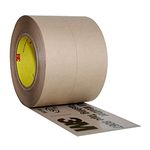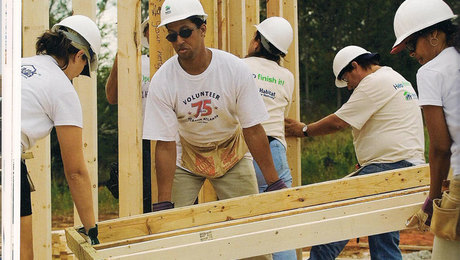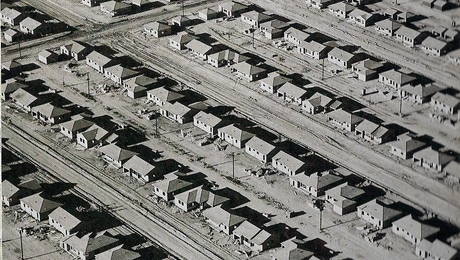
I read recently about a larger than 10,000 sq. ft., LEED certified Platinum house that was built in Aspen. The article extolled all the “green” elements that had been used into his house to cut down on energy use. Nothing was said about all the energy it cost to build this structure bringing in materials from all over the world and carting them by truck way into the beautiful Colorado Mountains.
Beyond this, I have a contractor friend in California who specializes in high-end work. He recently finished a huge, LEED certified house sitting on an expanse of land overlooking the Pacific Ocean. He told me that the couple that owned the house said they built it “because they could.”
Can you help me? What about this am I not understanding? Sometimes I still feel like I am still the country boy who migrated out of western Nebraska 60 years ago with mud on his boots and frost on his nose.
With all the LEED bashing going on what can I say that is praiseworthy? From my point of view, down here in the trenches, what LEED has given us is awareness. They have given us a list to measure the greenness or sustainability of a building. They told us that we can, really must, do better using the finite resources we find on this tiny spec of a planet we call home. If we can truly understand, actually feel, the importance of this knowledge and begin to introduce it into how we build, then I think that LEED is worthy of praise.
By the way, can you help me with this? Where does this “bigger is better” concept come from? Is this the American way—“Don’t tread on me”—I will build whatever I want so get out of my way. Should we take note that Native Americans encourage their people to not undertake any project unless they consider what effect it will have on the next seven generations?
There is a mega-house not far from where I live that has seven bathrooms and five fireplaces. A granddaughter says it looks bigger than her middle school. Are the couple and their dog that live there happier than we are in our 1000 sq. ft. house? I hold no moral high ground, but I have never lived, by choice, in a house with more than 1,200 sq. ft. even with a growing family. I say by choice because small houses allowed me to be free to do what I really wanted to do rather than work to pay a large mortgage and insurance bill, spend endless hours in upkeep, pay property taxes beyond my means, and worry about whether I was keeping up with my neighbor or not.
Let’s look at what the LEED list means down on the local, house building level? I asked a builder friend what he thought about LEED and building green. He, like me, was somewhat intimidated by the list. He wanted information that was easy to use that would cut down on energy use and not add 15% or more to the cost of a building. Who in this area, he asked, can afford all that “green bling?”
Here is what his company is doing in this bottomed out construction time. As far as I know they are the only ones building here on the coast, 4 or 5 houses each year for the last several years, most of them pre-sold. The only dead weight they have is a big spec house they built 3 years ago that is sitting empty on a hill.
First of all, they build relatively small, 15,000 sq. ft. or so. Building small seems to be the greenest thing we can do. Dare we even consider what we should do with the 8 million foreclosed houses sitting vacant across our country?
They build as local as they can not bringing in tile from Italy, hardwoods from Brazil, or drywall from China. Even more important, they are not building boxes. They know how to design a house, both inside and out, that welcomes you home with open arms.
Beyond that, here is part of their list, simple things, for the most part, that we can all do without adding much to construction costs:
- Site the house for maximum heating from the sun.
- Build in 2 foot increments—A house 31 ft. 4 in. long uses lots of extra material.
- Seal the sill and all other areas where cold air might infiltrate.
- Use caulking that won’t shrink and crack before escrow closes.
- Many walls are built with studs 2 ft. o.c.
- Windows are double glazed and exterior doors insulated.
- Plumbing for kitchen, utility room, and bath are kept close together.
- Grey water is diverted to flush toilets or water outside plants.
- Low-flow faucets and double-flush toilets cut down on water usage.
- A 300 gallon tank under a downspout allows for rainwater collection.
- They install a small solar hot water heater.
- Skylights let in natural light and let hot air escape.
- They use extra insulation in the floor, walls, and ceiling and put it in with care.
- Large roof overhangs, where needed, shield windows from the hot summer sun and let in the winter sun.
- Timers are put on lights and heaters to help control energy use.
- On the outside, they use material other than concrete to allow water to seep back into the ground.
- Native plants are the norm. No need to buy a lawn mower.
I encouraged them to put in a clothes line. This is not a total list, by far, of rather simple things we can do to “green up” a house. I invite you to add to it in hopes that it might be helpful to builders across the country.
Fine Homebuilding Recommended Products
Fine Homebuilding receives a commission for items purchased through links on this site, including Amazon Associates and other affiliate advertising programs.

Reliable Crimp Connectors

8067 All-Weather Flashing Tape

Handy Heat Gun




























View Comments
Hmmm, Maybe we should be proposing a housing tax based on the ratio between the home's square footage per occupant?
Also, I think it is interesting how people commonly justify (aka make excuses) for their excesses. Sure there's the billionaire who needs a 100 room mansion for all the guests he receives... as if any of those mansions has ever been full up. But more commonly there's the older couple who want more space for the holidays. As if adding 1000sf of guest bedroom and bath that is only really utilized 2-4 days a year are really necessary. What ever happened to the hid-a-bed and pull-out couch?
Similarly you will see many singular drivers on the road behind the wheel of SUV's and CrewCab pickup trucks. I know that guy in the suit and tie driving that pickup isn't a contractor and the shiny paint in the bed assures me he rarely even uses it. The woman in the school bus sized SUV is a "soccer mom", meaning during certain times of year she takes her daughter to soccer practice a couple of times a week. Once she took her daughters friend too. Someday she might need all those seats (probably not). I drive a big fuel guzzling van and use it's space for my work. I wish I could go smaller but for a long time there weren't many options. Now there are and I am happy to make my justification towards going smaller instead.
Worse yet is the [poor] assumption that because something is "energy efficient" then it can be wasted. The other day I was standing in the light bulb section of Home Depot - trying to decide which color I wanted - when the sales associate decided to interject, "I love those new CFL's they use so much less power. I replaced my porch light with one and it uses so little power that we just leave it on all the time." I looked at the porch light specific light she was nodding towards; 29 watts per hour replaces 100 watts incandescent. So, let's say they used to run their porch light for 6 hours between sundown and bedtime in the winter, summer I would only say 3 hours, then they used to use a maximum of 600 watts per day per light with seasonally adjusted use. But now with the CFL on 24/7 they are using 696 watts per day per light all year long. Obviously that's not really energy efficient.
But that's how people are. They add efficiency so they can justify consuming more. "Stuff in more insulation so I can really crank the heat", "I have an energy star furnace and air conditioner so I can keep the house 80˚ all winter and 50˚ all summer" "my old SUV was a gas guzzler but my new SUV is great on gas". Just because you are able to con yourself into thinking you are a good person that helps the environment - on your time schedule and in your misconceived circumstances - it doesn't mean you are really making a good difference.
LEED is a joke. NAHAB doesn't help the cause and AIA is retarded. They didn't teach anything about LEED during my stay at University of Michigan studying Architecture. It's all a racket if you ask me - just another money grab.
DC
Very well said DC, people do add efficiency so they can justify consuming more. Ever since I was young I wanted a big house, because my family has never lived in a house over 1200sq.ft. (even with my five brothers and sisters). I had the prints for a 4500sq.ft home, that my fiancée and I was going to build after we got married, but after a few months of following Larry's blog, (especially the series "My Story Through Houses") we have decided for a 750sq.ft home.
I do wish someone would make a comprehensive list, which would not add much extra cost, but would make a house more energy efficient. Even if it was just good ole horse sense that so many(including myself)lack. In the south, our winter's aren't near as cold so we like to do the opposite, we like to build under trees to provide shade in the summer, and therefore cut down on cooling cost.
Larry, It's because of you, your books and your videos, that I am the carpenter I am today. And for that, sir, I thank you.
John Beeson
In the early 1930's my father's family moved to Palo Alto, CA. Grand dad had stashed away a few bucks before the Great Depression hit so they lived in some pretty nice, big houses that the formerly rich could no longer afford to keep. We went there in the 1960's with my dad and all of these big homes were devided up into appartments. Maybe that's the natural progression for these huge homes being built. Today's ritzy neighborhoods become tomorrows multi family, low rent centers.
Thanks for the insighful comments. Appreciated the good words from WHODOG. Palaces to apartments from Wood & Iron also interesting. Larry Haun
I truly enjoy the way the blog starts by aserting 'bashing' long before discussing anything about LEED. I guess that's what passes for open discourse these days: forget facts, start off by attacking any opposition.
I'm not sure what term describes a society based upon demonizing the other guy, but I'm not finding it under 'democracy,' 'republic,' or 'free.' Maybe I need a better dictionary.
One poster hits the nail on the head when he suggests using taxes to influence behaviour. That's what LEED is all about: regulating behaviour. It's not about anything 'green,' saving resources, or better design.
That's why so much of the LEED 'scoring' method has to do with elements that have absolutely nothing to do with the building itself. For example:
-LEED has no size specifications, or score element that addresses one of the blog's points;
-Some of the LEED criteria focus on transient factors like contractor access to the job site;
-Other LEED criteria focus on issues that are under the control of the city council, bus company, etc.; and,
-Some LEED criteria focus on the behaviour of the occupants.
That's a bit beyond any manner of 'building code.'
LEED advocates will usually jump in at this point and say "but it's a private group, and following the program is purely voluntary.' I'm not buying THAT for a second.
Why? Because the LEED system relies upon various governmental bodies to do the dirty work for them. PUD, brownfield, low-hanging fruit, urban core, greenbelt .... these are all important factors weighed by LEED and completely beyond the control of the contractor.
Just as important, every one of those factors presupposes a role for countless governmental bodies to tell us what to build, where to build, and how we use what is supposedly our property.
Long ago Hammurabi saw the need for the common man to know what rules he was supposed to follow. LEED takes the opposite approach, by instituting an infinite variety of contradictory factors, all weighed anonymously by some unaccountable oracle.
Doubt me? OK, then show me a house that can be built anywhere and maintain its' LEED score. Then guarantee me that the house will still keep that rating 20 years from now. It simply can't be done.